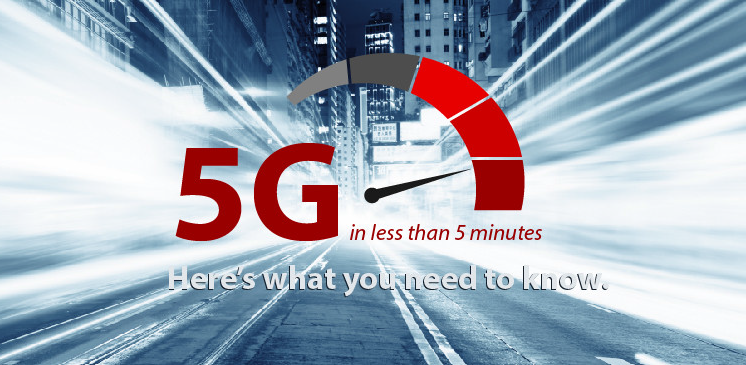
The promise of 5G is big for service providers. Here are five things service providers can expect from 5G:
1. Higher Bandwidth, Lower Latency
The 5G RAN supports up to 20 Gb/s of bandwidth and latency as low as 1 ms. This allows service providers an opportunity to offer an enhanced experience for applications like HD Video Streaming, Gaming, Video Calling, Immersive Technologies (Augmented Reality and Virtual Reality), self-driving cars, and automated factories.
2. Massive Internet of Things and Massive Machine Type Communications
One of the goals of the 5G architecture is to support a much larger number of devices in a given area. Support for increased density of devices allows service providers to enable smart cities, smart buildings, connected homes, and more.
3. Network Slicing
5G use cases and services will vary greatly in their network requirements. Network Slicing is expected to play a large role in 5G networks by offering service providers the flexibility to take a virtual slice of the network to support specific application requirements. Some new 5G use cases such as autonomous cars might require ultra-low latency and higher bandwidth for efficient signal processing. Applications like remote health monitoring will require high reliability and low latency. Network slicing will allow service providers to carve out dedicated network resources from the common infrastructure to meet the performance requirements of each service.
There are three standardized network slices defined by 3GPP:
- eMBB to support Web browsing, video streaming services, and third-party service providers
- Massive Internet of Things (MIoT) to support a large number of delay-tolerant and low data rate devices
- Ultra-Reliable Low Latency Communication (URLLC) to support Vehicle-to-Everything (V2X) and other applications.
Additionally, service providers can define their own network slices using the standardized 3GPP framework.
4. Multiple Deployment Options
A 5G network consists of a Next-Generation Radio Access Network (NG-RAN) and a new core network (5GC). The flexibility of the 5G architecture allows for mixed deployments. Multiple radio-core connectivity options exists. For example, service providers can choose to evolve their networks by integrating Next Generation Node Bs (gNBs) into their current RAN and core architectures, or decide to roll out a standalone 5G option with 5G gNBs and a 5GC. They also have the flexibility to deploy a 5G RAN with a 4G LTE Evolved Packet Core (EPC) and upgrade to a 5GC later.
5. Virtualization Benefits
Coupled with 5G, virtualization technologies like Network Functions Virtualization (NFV) and Software-Defined Networking (SDN) will help service providers achieve scalability, service agility, and reduce costs. Virtualization technologies can be utilized in both the 5G RAN and the 5G Core. In fact, there are over a dozen network functions that can be virtualized by NFV and interconnected with SDN in 5G networks.
Virtualization in 5G will also unlock network capabilities like Network Slicing and Multi-access Edge Computing (MEC) to reduce end-to-end latency, alleviate network congestion, and improve application performance.
To stay connected on the latest 5G developments, connect with us on Twitter and LinkedIn. You can also check out all of Award Solutions' courses at www.awardsolutions.com.
About the Author
Paul Shepherd is a Senior Consultant for Award Solutions. Paul joined Award Solutions in 2012, and has over 28 years of experience in telecom. He has successfully developed and delivered emerging technology training to leading service providers worldwide. In his free time, Paul is also rumored to enjoy playing guitar, especially his Gibson ES Les Paul.
About Award Solutions, Inc.
Award Solutions is the trusted training partner to the world's best networks. We help companies tackle new technologies by equipping their teams with knowledge and skills. Award Solutions invests heavily in technology, research, engineering, and labs to ensure our customers make the most of their resource and network investments.
Award has expertise across all technologies that touch wireless: 5G, Artificial Intelligence, Machine Learning, Network Virtualization, Data Visualization, Data Manipulation, 4G LTE, and more.
